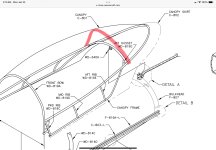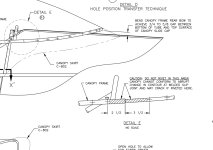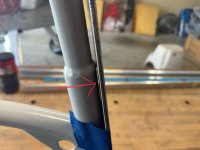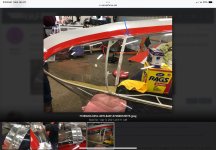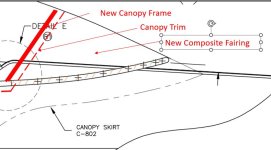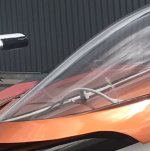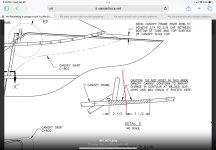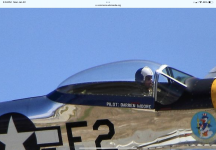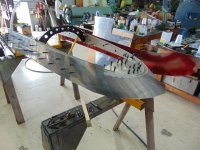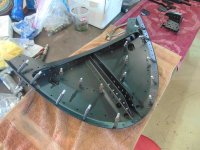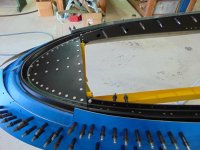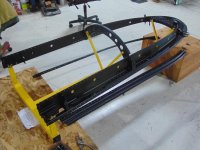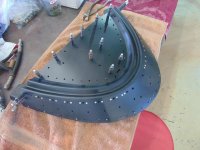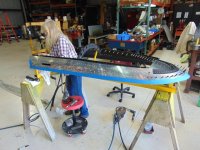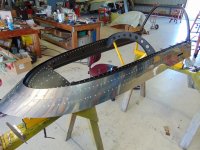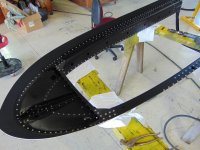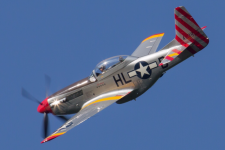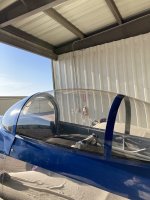My 8 was crack free when I bought it, 16 years old, came from a warm humid climate hangared. Within a week it cracked near the skirt at the rear, I suspect a change of climate did it, cold and damp although still hangared!
I'm sure there are many contributing factors that could cause cracks in the canopy, but one I don't think that has been mentioned was shop temperature when it was installed.
My guess is that the colder it is when drilling (or bonded with Silkaflex) could give it more resistance to cracking.
Let me explain......as we all know, acrylic is more brittle when cold. If the canopy is installed when warm, the canopy is nice and pliable (good for cutting and handling), and the frame is at the high end of the CTE range.
When it gets cold, the canopy has contracted the most, but it's more brittle than it's warm state, but the steel frame has changed little from it's warm state, so the stress in the acrylic are higher, and is closer to cracking.
Let's say the OAT operating range is 0 deg F to 130 deg F. Average range is 65 deg F. (I'd calculate the CTE range but my mother told me never to do math in public)

If when mounting the canopy, you could bias the neutral point of the CTE range, to the colder side (or even neutral), I think that would help.
Seems to me that if you could mount/drill/bond in a colder state (not crazy cold obviously, say 60-65 deg F) the canopy and the frame would closer to the average CTE range. Then it gets hotter and moves to the other range of the CTE delta, but the canopy would be warmer (more pliable) and more crack tolerant at that end of the CTE range........
Of course you run the risk of cracking the canopy in the colder conditions when handlin/installing it. Interesting problem.
Thoughts?
Laird
